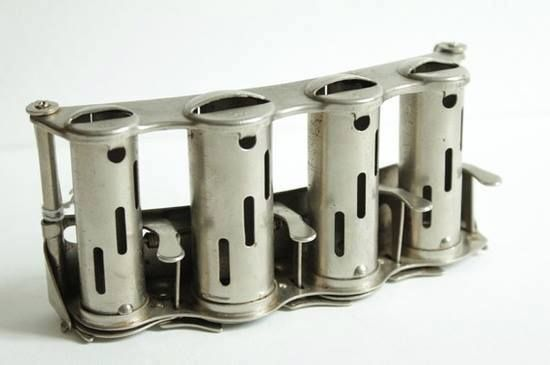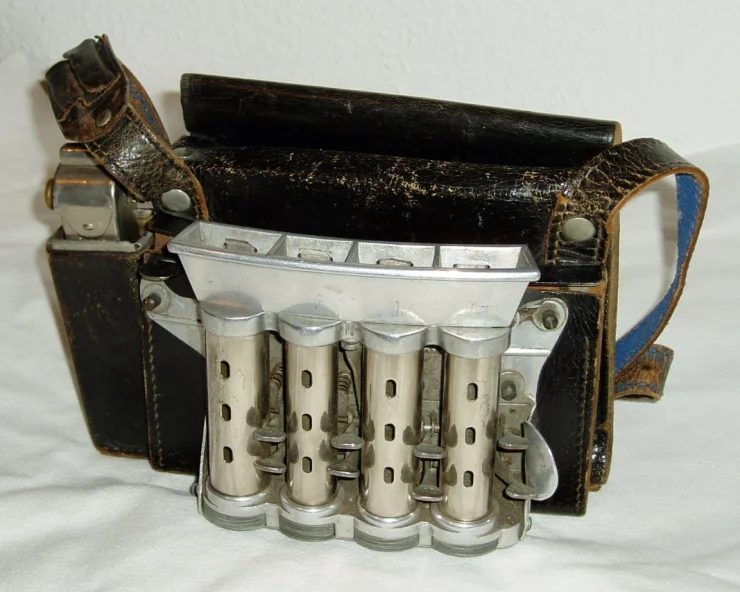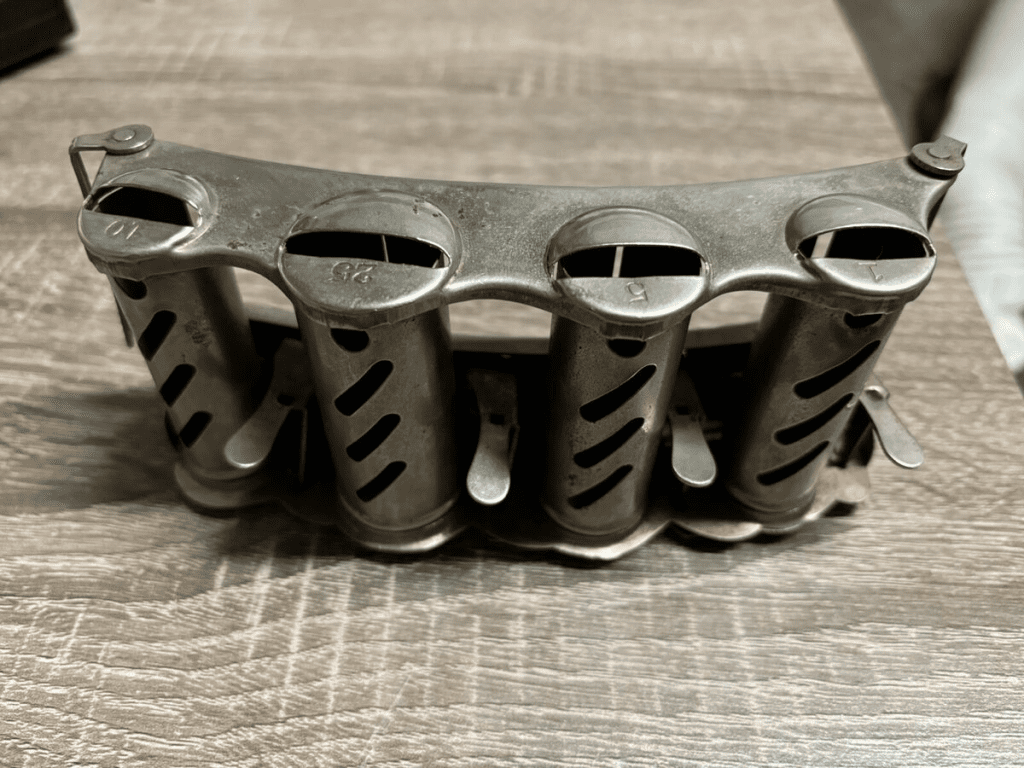In the days before card payments and contactless technology, a clever little gadget made life easier for people handling cash on the go. Belt change dispensers, once a common sight among bus drivers, conductors, and other cash-handling professions, have largely faded into obscurity. Let’s take a trip back in time to explore what these devices were used for, how they worked, and what became of them in our digital age.

The Purpose of Belt Change Dispensers
Belt change dispensers served a simple but vital purpose. They allowed quick and efficient distribution of coins, perfect for anyone who needed to handle a large volume of change on the job. Back in the day, you’d often see these attached to the belts of bus drivers, train conductors, and street vendors. With a single lever pull, the dispenser would release the exact change needed, making transactions faster and more convenient.
Imagine a bus driver back in the 1940s: handling passengers and making change while keeping one eye on the road. The belt change dispenser allowed drivers to focus on their primary tasks without fumbling for coins. Its simplicity and reliability made it a popular choice among workers whose livelihoods depended on quick, repetitive cash transactions.
The Invention of the Coin Dispenser
The wearable coin dispenser can be traced back to the ingenuity of Jacques L. Galef. Galef patented his coin change machine around 1921, sparking the popularity of these dispensers. While it’s unclear if he was the first to develop the concept, his design embodied the basic mechanics that many dispensers would adopt. The device was designed to be worn on a belt for ease of access and could dispense various coin denominations, typically nickels, dimes, quarters, and pennies.
Galef’s invention was so successful because it solved a universal problem: handling change quickly and efficiently. His dispenser became an iconic tool of the early 20th century, and versions of it continued to be used for decades.
How Belt Change Dispensers Worked
The mechanics of these dispensers were ingeniously simple. Each coin denomination was held in its own metal tube, with a lever attached to the bottom. The tubes had a spring-loaded mechanism, so when you pressed the lever, a single coin would drop out. The lack of electronic parts meant that the dispenser could be used anytime, anywhere—no batteries or power cords required.
To refill the dispenser, you would open the top and load in coins as needed. Each tube could typically hold about one roll of coins per denomination, making it a practical choice for workers needing quick access to a moderate amount of change. The simplicity of the design meant it rarely malfunctioned, which was essential for the people who depended on it daily.

Who Used These Coin Dispensers?
Belt change dispensers became especially popular among bus drivers, ticket agents, and street vendors. In busy cities, they enabled public transportation workers to make change for passengers quickly, reducing wait times and keeping lines moving. Movie theaters and drive-in attendants also found these dispensers useful for dispensing change quickly.
Beyond professional settings, belt change dispensers made their way into recreational spaces. For instance, attendants at carnivals, fairs, and arcades often used them when giving out coins for arcade games or change for ticket purchases. They became a fixture in industries where speed and efficiency were essential, and they helped streamline countless daily transactions.
The Decline of the Belt Change Dispenser
As the decades rolled on, the role of cash in daily transactions began to diminish. The advent of credit cards, followed by the digital revolution, drastically reduced the need for such devices. By the 1990s, belt change dispensers had become relics, only seen in specific niche markets or as collectibles.
While you can still find a few being used at events like fairs or in certain nostalgic vending settings, the dispenser’s everyday relevance has largely disappeared. Today, cash transactions have been largely replaced by digital payment methods, and even in cash-dependent industries, coin handling has become less common.
Belt Change Dispensers as Collectible Items
Though they’ve lost their practical purpose, vintage belt change dispensers have found new life among collectors. Antique enthusiasts appreciate these gadgets for their unique design and historical significance. Collectors seek out original models, particularly those from the early 20th century or specific manufacturers.

For anyone interested in history, belt change dispensers offer a tangible connection to a bygone era. They represent a time when cash ruled the world and manual tools were essential for efficiency. Many collectors enjoy displaying them, and some even use them as decorative conversation pieces, a testament to the ingenuity of earlier times.
Where to Find Vintage Belt Change Dispensers Today
If you’re interested in acquiring a vintage belt change dispenser, your best bet is to start with antique stores, online marketplaces, and auction sites. Popular sites like eBay or Etsy often have a selection of these dispensers available, ranging from basic models to rarer versions with unique features or engravings. Prices can vary widely depending on the dispenser’s age, condition, and historical significance.
Another option for finding these items is through antique fairs or collectible expos, where you might come across vendors specializing in vintage cash-handling equipment. Certain specialized stores and online shops also carry belt change dispensers, typically catering to collectors and enthusiasts of vintage Americana.
Conclusion
The story of the belt change dispenser is a fascinating glimpse into the evolution of everyday tools. Once a mainstay of cash-heavy industries, these dispensers are now treasured as artifacts of a simpler time. Though they may no longer serve a practical purpose, their legacy lives on in the hands of collectors and historians who appreciate their contribution to the efficient handling of cash. Belt change dispensers remind us of the days when tangible money was king, and hands-on tools kept businesses moving.


